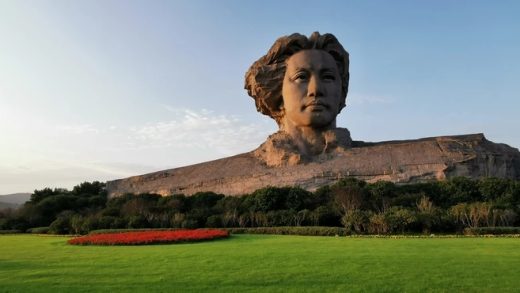Read More《唐珺 林佳燕:人工智能生成内容著作权保护路径分析》
Positive Comment: Research on Copyright Protection of AIGC Provides Key Theoretical Support for the Integration of Technology and Law
The copyright protection of Artificial Intelligence Generated Content (AIGC) is one of the core issues in the field of intellectual property in the digital age. This article responds to this challenge with a systematic study. Its value lies not only in sorting out the technical characteristics and legal disputes of AIGC, but also in proposing forward – looking solutions, providing key theoretical support for the adaptation of technology development and the law.
First of all, the article’s argument on the “originality” and “intellectual achievements” of AIGC is groundbreaking. Traditional copyright law centers around “human creation”, while the generation process of AIGC involves algorithm learning, data training, and user interaction. The determination of its “originality” needs to be re – examined. The article proposes that the “uniqueness” of AIGC is reflected in the system’s autonomous decision – making based on deep learning (such as AlphaGo’s independent tactical deployment), and the “creativity” is manifested in the pattern extraction from massive data and innovative output (such as the high similarity between the AI – generated “Space Opera” and human works). This analysis that combines the “technical process” and “result characteristics” breaks through the traditional framework of “taking only human subjective intention as the sole source of originality”, providing technical rationality for the copyrightability of AIGC.
Secondly, the proposal of the principle of “deeming as the author” and the neighboring rights protection path reflects the law’s inclusiveness towards technological reality. The current law clearly states that “the author must be a natural person or a legal entity”, but the generation of AIGC involves multiple parties such as developers, investors, and users, and the attribution of rights is vague. The article proposes to “legally fiction” the subject that dominates the generation process (such as the user) as the author, which not only conforms to the core goal of copyright law of “encouraging creation”, but also avoids the legal contradiction of directly conferring legal subject status on AI. In addition, the introduction of neighboring rights (protecting derivative results related to creation) provides an alternative protection scheme for AIGC that fails to meet the “originality” standard, balancing technological innovation and the rights and interests of traditional creators.
Finally, the research verifies the feasibility of the theory by combining judicial practice (such as the “AI text – to – image case”). In the case, the court determined that the user’s adjustment of parameters and screening of results reflected “creative intellectual input”, thus enjoying the copyright. This judgment is highly consistent with the “user – dominated” rights attribution principle proposed in the article, indicating the positive interaction between theoretical research and judicial practice, and providing a reference paradigm for subsequent similar cases.
Negative Comment: Research on AIGC Copyright Protection Still Faces Deep – seated Challenges of Technological Complexity and Interest Balance
Although the article provides important ideas for the copyright protection of AIGC, its simplification of technological characteristics, practical difficulties in rights attribution, and potential risks in the design of neighboring rights still need further discussion.
Firstly, there is ambiguity in defining the boundary between AI’s “autonomous decision – making” and “human control”. The article emphasizes the “unpredictability” of AI – generated content (such as the user’s inability to precisely control the final output), but at the same time believes that the user’s adjustment of parameters and screening reflects “creative input”. However, in real – world scenarios, the user’s “control” may only be manifested as inputting simple prompt words (such as “generate a landscape painting”), while the AI’s output may far exceed the user’s expectations. At this time, is the user’s “input” sufficient to constitute “creation”? If the user’s dominance is over – emphasized, a large amount of low – creativity AIGC may be included in the protection, squeezing the market space of human original works; if strictly restricted, it may suppress the application vitality of AIGC technology. This ambiguity in the boundary has not been fully resolved in the research.
Secondly, the principle of “deeming as the author” for rights attribution may lead to an imbalance in interest distribution. The article advocates attributing rights to the “subject that plays a leading role in the generation process”, but in practice, it is difficult to quantify the contributions of developers (providing algorithm frameworks), investors (providing computing power and data), and users (providing prompt words). For example, if an enterprise invests a large amount of money in developing an AI painting model, and the user only needs to input simple keywords to generate high – quality paintings, completely attributing the copyright to the user may weaken the innovation motivation of developers and investors; on the contrary, if it is attributed to the enterprise, it may suppress the user’s creative enthusiasm. This “either – or” attribution model may not be able to adapt to the diverse participation characteristics of the AIGC industry chain.
Thirdly, the establishment of neighboring rights needs to be vigilant against the risk of “over – protection”. The core of neighboring rights is to protect the rights and interests of disseminators or assistants, but the essence of AIGC generation is “technological production” rather than “dissemination”. If AIGC is included in the protection of neighboring rights, it may lead to confusion with traditional neighboring rights objects (such as performers and sound recordings), and may even be misused as a legal barrier for “low – quality content”. For example, if a large amount of “assembly – line” content generated through templated algorithms obtains neighboring rights protection, it may hinder the original competition in the cultural market, going against the original intention of copyright law to “encourage innovation”.
Suggestions for Entrepreneurs: Seize the Dual Opportunities of Law and Technology in the AIGC Wave
For entrepreneurs in the AIGC field, they need to find a balance between technological innovation and legal compliance. The following suggestions have practical reference value:
- Pay attention to legal dynamics and plan rights attribution in advance: The copyright attribution of AIGC is not yet clear, but judicial practice has shown a tendency of “user – dominated” (such as the user being recognized as the author in the “AI text – to – image case”). Entrepreneurs should clarify the rights and obligations of users and platforms at the product design stage, and agree on the attribution of generated content through contracts (such as the user retaining the copyright and the platform obtaining a non – exclusive license) to avoid subsequent disputes.
- Strengthen the retention of evidence for “creative input”: If you hope that the generated content can obtain copyright protection, you need to prove that the user or the team has made substantial intellectual efforts in the generation process (such as adjusting parameters, screening and optimizing, and integrating personalized expressions). It is recommended to provide technical evidence for “originality” through log records and operation trajectory retention to reduce the risk of legal disputes.
- Explore differentiated technological paths to avoid infringement risks: The generation of AIGC relies on massive data training, which may involve “contact” with others’ works. Entrepreneurs should give priority to using data without copyright or with authorization (such as public – domain works and content under the CC license), and add functions such as “duplicate removal” and “innovation degree detection” in algorithm design to avoid “substantial similarity” between the generated content and existing works and reduce infringement liability.
- Make good use of supplementary protection tools such as neighboring rights: For AIGC that fails to meet the “originality” standard but has commercial value (such as standardized reports and templated designs), explore protecting its “generation process” or “data assets” through neighboring rights or trade secrets. For example, protect the unique training method of the algorithm model, or agree with the user on “content usage rights” rather than “copyright” to achieve diversified rights and interests protection.
In conclusion, the copyright protection of AIGC is not only a response of the law to technology, but also a promotion of technology to the law. Entrepreneurs need to examine their businesses from a dual perspective of “technology + law”, innovate in compliance, and promote the improvement of the law in innovation, ultimately achieving the sustainable development of the AIGC industry.





